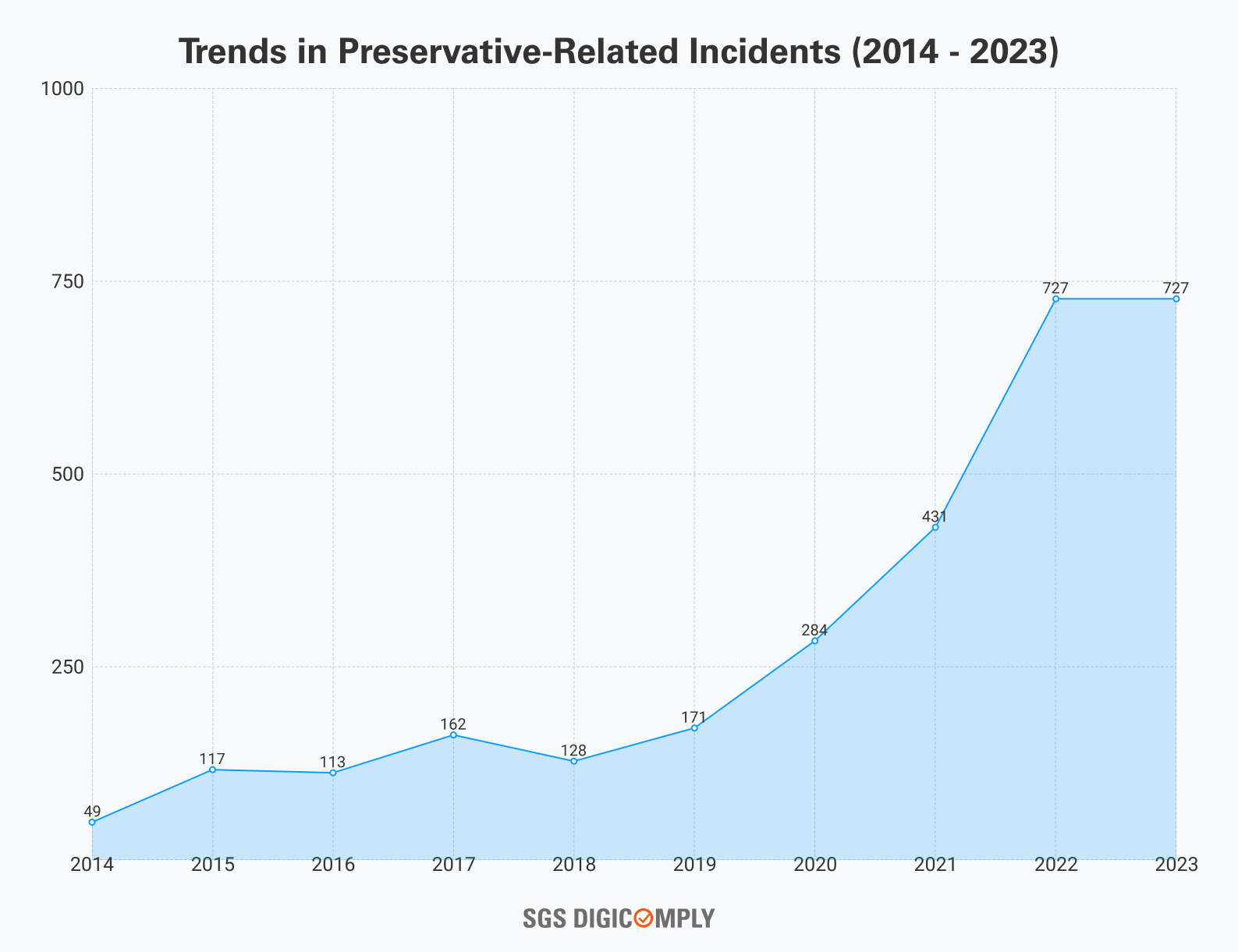Preservatives play a pivotal role in extending the shelf life of packaged foods, ensuring their safety and maintaining quality. However, concerns persist regarding the potential health risks associated with some commonly used preservatives. Understanding these risks requires a comprehensive evaluation of various preservatives and their impact on human health.
Types of Commonly Used Preservatives:
1. Sodium Nitrite and Nitrate: These preservatives are frequently used in processed meats to prevent bacterial growth and maintain color. However, high consumption has been linked to health issues such as an increased risk of cancer and adverse cardiovascular effects.
2. Sulfites: Found in a wide range of foods like dried fruits, wine, and processed meats, sulfites can trigger allergic reactions, especially in individuals with asthma.
3. BHA (Butylated Hydroxyanisole) and BHT (Butylated Hydroxytoluene): Often added to prevent spoilage in fats and oils, studies suggest potential carcinogenic effects in animals, raising concerns about their impact on humans.
4. Propyl Gallate: Used to prevent fats and oils from spoiling, propyl gallate has been associated with allergic reactions and potential carcinogenicity.
5. Benzoates: These preservatives, like sodium benzoate, are effective against yeasts and molds. However, there are concerns about their link to hyperactivity in children and potential adverse effects on DNA.
Evaluating Health Risks:
Assessing the health risks posed by preservatives involves considering various factors:
1. Exposure Levels: Understanding the typical levels of preservatives consumed daily and their cumulative effects is crucial in determining potential risks.
2. Individual Susceptibility: Factors such as age, underlying health conditions, genetic predispositions, and allergic tendencies influence how an individual responds to preservatives.
3. Research Findings: Studies investigating the impact of preservatives on human health provide essential insights. Continual scientific research helps in understanding both short-term and long-term effects.
4. Regulatory Guidelines: Different countries have varying regulations regarding preservative use in foods. Monitoring adherence to these guidelines is essential to safeguard public health.
Mitigating Risks and Future Outlook:
To address concerns associated with preservatives in packaged foods, several measures can be taken:
1. Alternative Preservative Options: Exploring and utilizing natural preservatives like rosemary extract, citric acid, and certain essential oils can offer safer alternatives.
2. Label Transparency: Improved labeling that clearly identifies preservatives and their potential risks can empower consumers to make informed choices.
3. Regulatory Oversight: Regular reviews and updates to regulatory standards can ensure that preservatives permitted in foods meet stringent safety criteria.
4. Consumer Education: Educating consumers about the risks, safe consumption levels, and how to identify and avoid preservatives can empower healthier food choices.
SGS DIGICOMPLY INSIGHTS: TRENDS IN INCIDENTS ASSOCIATED WITH COMMONLY USED PRESERVATIVES (LAST 10 YEARS)
SGS Digicomply Horizon monitoring has detected a sharp surge in incidents related to preservatives over the past 10 years, with a growth of over 1350%.

Nearly 50% of incidents fall under the 'control' category, attributed to increased regulatory attention. Most incidents occurred in China, the USA, Taiwan, and European Union countries. It's crucial to ensure your product meets regulatory standards and provides safe food for consumers. We'll continue monitoring this at SGS Digicomply - All-in-one Food Safety & Regulatory Compliance platform, and we recommend you do the same. Explore SGS Digicomply platform now.
Conclusion
While preservatives serve a crucial purpose in maintaining food safety and quality, understanding and mitigating their potential health risks remain paramount. Continuous research, regulatory vigilance, and consumer awareness are pivotal in ensuring that the benefits of preservatives outweigh their potential hazards. Striking a balance between food preservation and public health is key to a safer and healthier future for packaged foods.
This evaluation highlights the complex interplay between preservatives and health, emphasizing the need for a multifaceted approach to ensure food safety without compromising consumer well-being.





.webp?width=1644&height=1254&name=Food%20Safety%20Dashboard%201%20(1).webp)
